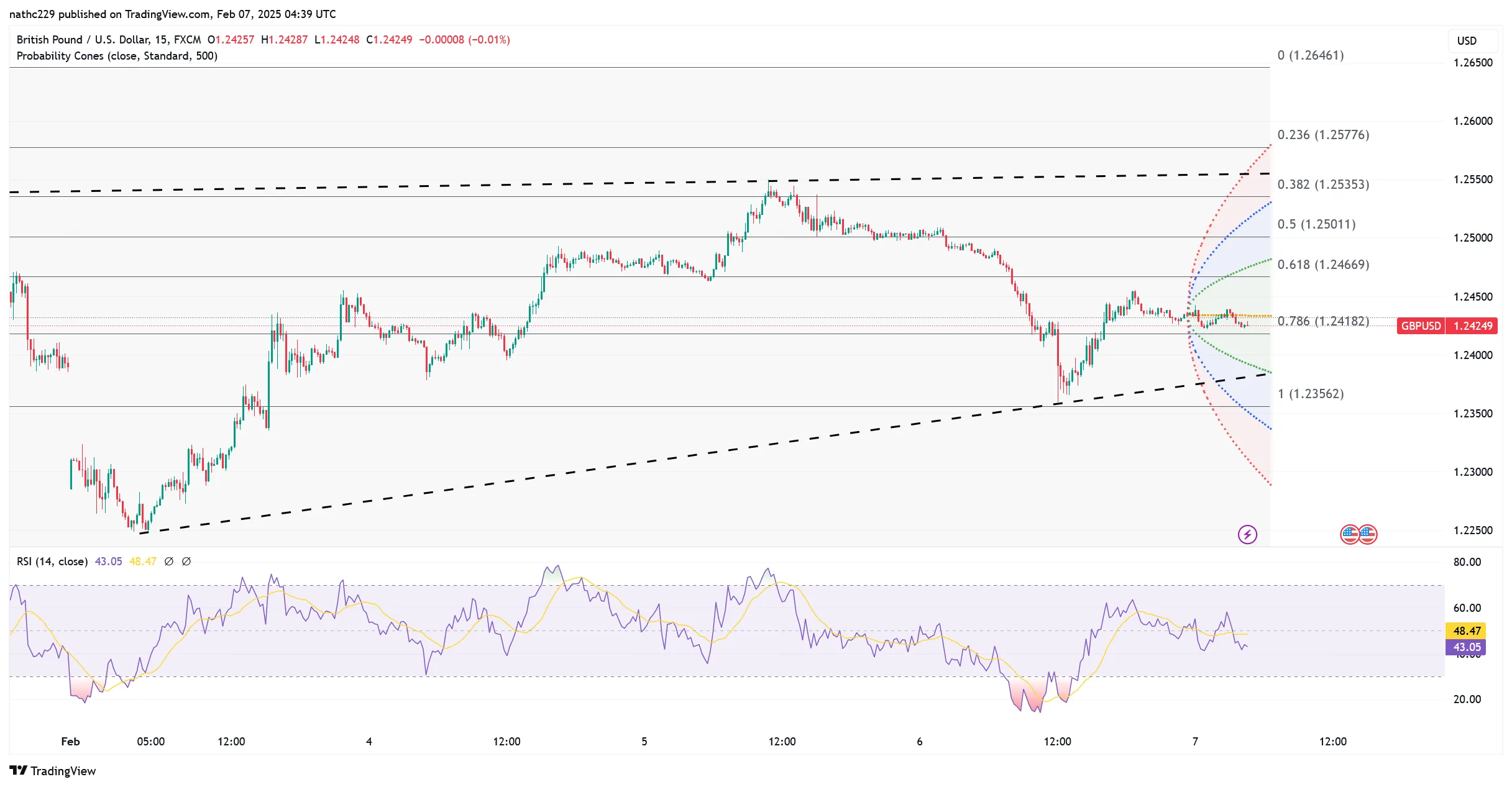
GBP/USD Under Pressure After Dovish BoE, Focus Shifts to U.S. Jobs Data
GBP/USD extended losses on Thursday, falling to a session low of 1.2361 after the Bank of England’s dovish 25bp rate cut. The 8-2 vote, with two policymakers advocating a 50bp cut, reinforced expectations that the BoE may adopt a more aggressive easing path, eroding sterling’s yield advantage over the dollar. Governor Andrew Bailey’s cautious tone signaled growing concerns over low UK growth and above-target inflation, raising the risk of renewed fiscal concerns that previously weighed on gilts and GBP/USD. The pair rebounded slightly to 1.2441 in the NY afternoon, but traders remain cautious ahead of Friday’s U.S. nonfarm payrolls report, which could influence the Fed’s near-term policy path.
Technically, GBP/USD remains under bearish pressure. Immediate support is seen at 1.2423 (100-hour moving average), with stronger support at 1.2357, the 21-day moving average. Below this, the key level to watch is the Feb. 3 tariff-related low of 1.2249, with a break potentially exposing the 2025 low at 1.21 from Jan. 13. Resistance lies at 1.2507/09 (55-day moving average and Thursday’s high), followed by 1.2571, the 50% Fibonacci retracement of the 1.3043-1.2100 decline. While GBP/USD remains supported above its 21-DMA, bearish momentum suggests further downside risks, particularly if market sentiment shifts toward expectations of deeper BoE cuts.
Looking ahead, sterling’s trajectory will be influenced by U.S. jobs data and inflation readings. Friday’s NFP report will be key in shaping Fed rate expectations, with any upside surprise potentially reinforcing dollar strength and pushing GBP/USD lower. Additionally, upcoming CPI data in both the U.S. (Feb. 12) and UK (Feb. 19) could further influence central bank outlooks. If markets sense the BoE will cut rates more aggressively than anticipated, GBP/USD could test key support levels, while a less dovish shift in Fed expectations may limit the pair’s ability to rebound.
